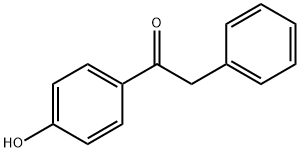1,2-Diphenylethane
Synonym(s):1,2-Diphenylethane;Dibenzyl
- CAS NO.:103-29-7
- Empirical Formula: C14H14
- Molecular Weight: 182.26
- MDL number: MFCD00004796
- EINECS: 203-096-4
- SAFETY DATA SHEET (SDS)
- Update Date: 2025-01-27 09:38:02

What is 1,2-Diphenylethane?
Chemical properties
white to light yellow crystal powder. soluble in chloroform, ether, carbon disulfide and amyl acetate, soluble in alcohol, almost insoluble in water. It reacts with chromium trioxide or permanganic acid to generate benzoic acid.
The Uses of 1,2-Diphenylethane
1,2-Diphenylethane is used as solvent for nitro fibre and in synthesis of other organic chemical products.
Definition
ChEBI: 1,2-dihydrostilbene is a diphenylethane that is the 1,2-dihydro derivative of stilbene.
Preparation
1,2-Diphenylethane is synthesized by the action of benzyl chloride with sodium metal. Or from the reaction of benzyl chloride in the presence of copper, or from the hydrogenation of benzoin in the presence of nickel.
Synthesis Reference(s)
Chemical and Pharmaceutical Bulletin, 36, p. 1529, 1988 DOI: 10.1248/cpb.36.1529
Journal of the American Chemical Society, 81, p. 1243, 1959 DOI: 10.1021/ja01514a057
Purification Methods
Crystallise bibenzyl from hexane, MeOH, or 95% EtOH. It has also been sublimed under vacuum, and further purified by percolation through columns of silica gel and activated alumina. [Beilstein 5 IV 1868.]
Properties of 1,2-Diphenylethane
| Melting point: | 50-53 °C(lit.) |
| Boiling point: | 284 °C(lit.) |
| Density | 1.014 g/mL at 25 °C(lit.) |
| refractive index | 1.5704 |
| Flash point: | >230 °F |
| storage temp. | Sealed in dry,Room Temperature |
| solubility | Soluble in ether, chloroform |
| form | Crystalline Powder |
| Specific Gravity | 1.014 |
| color | White to light yellow |
| Water Solubility | PRACTICALLY INSOLUBLE |
| Merck | 14,1198 |
| BRN | 508068 |
| Dielectric constant | 2.4(43℃) |
| Stability: | Stable. Combustible. Incompatible with strong oxidizing agents. |
| CAS DataBase Reference | 103-29-7(CAS DataBase Reference) |
| NIST Chemistry Reference | Bibenzyl(103-29-7) |
| EPA Substance Registry System | Bibenzyl (103-29-7) |
Safety information for 1,2-Diphenylethane
| Signal word | Warning |
| Pictogram(s) |
 Exclamation Mark Irritant GHS07 |
| GHS Hazard Statements |
H315:Skin corrosion/irritation H319:Serious eye damage/eye irritation H335:Specific target organ toxicity, single exposure;Respiratory tract irritation |
| Precautionary Statement Codes |
P261:Avoid breathing dust/fume/gas/mist/vapours/spray. P271:Use only outdoors or in a well-ventilated area. P280:Wear protective gloves/protective clothing/eye protection/face protection. |
Computed Descriptors for 1,2-Diphenylethane
Related products of tetrahydrofuran








You may like
-
 Dibenzyl CAS 103-29-7View Details
Dibenzyl CAS 103-29-7View Details
103-29-7 -
 Bibenzyl 98% CAS 103-29-7View Details
Bibenzyl 98% CAS 103-29-7View Details
103-29-7 -
 Dibenzyl, 99% CAS 103-29-7View Details
Dibenzyl, 99% CAS 103-29-7View Details
103-29-7 -
 Bibenzyl CAS 103-29-7View Details
Bibenzyl CAS 103-29-7View Details
103-29-7 -
 37951-47-6 3'-Benzyloxy propiophenone, 98% 99%View Details
37951-47-6 3'-Benzyloxy propiophenone, 98% 99%View Details
37951-47-6 -
 104944-18-5 99%View Details
104944-18-5 99%View Details
104944-18-5 -
 3'-Methoxypropiophenone, 99% 37951-49-8 99%View Details
3'-Methoxypropiophenone, 99% 37951-49-8 99%View Details
37951-49-8 -
 51364-51-3 99%View Details
51364-51-3 99%View Details
51364-51-3